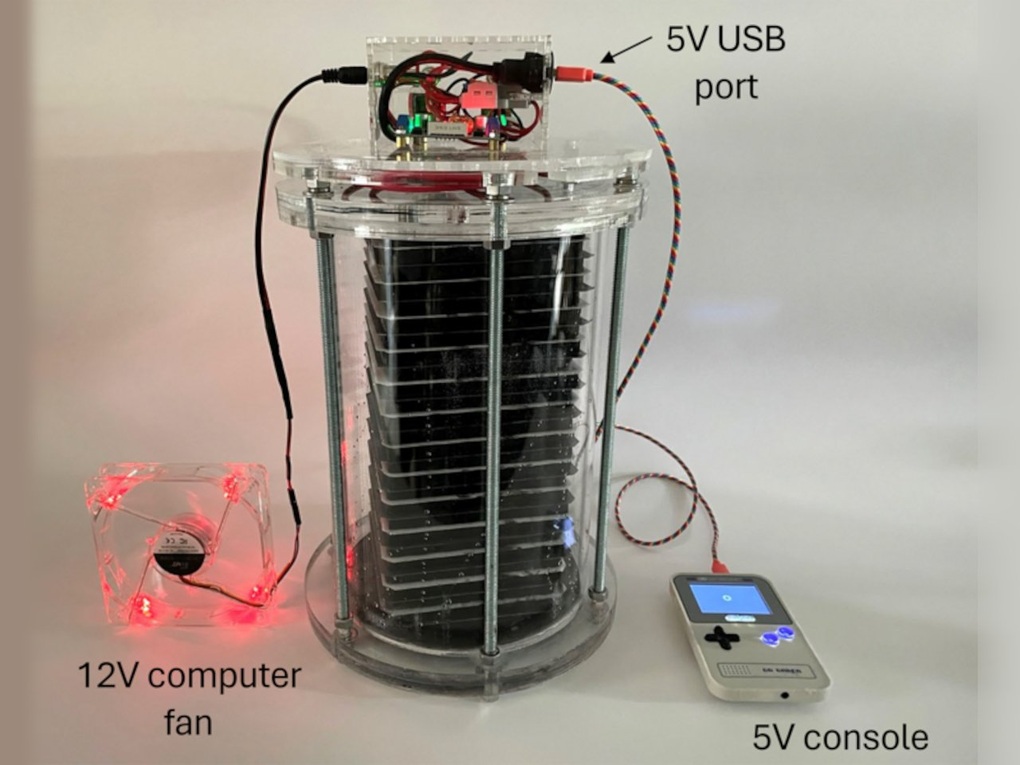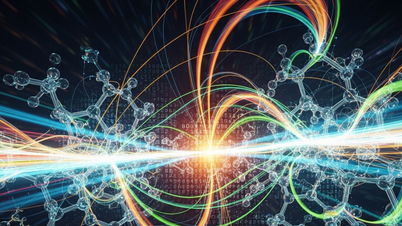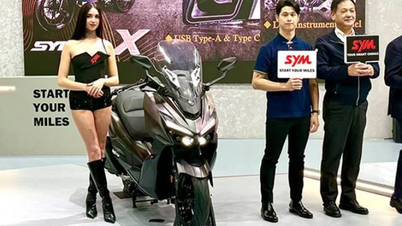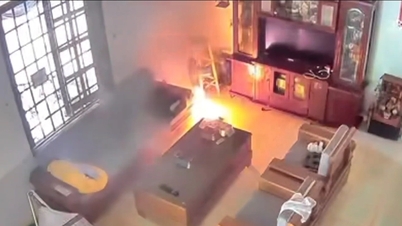Concrete is one of the symbols of the industrial age. Now, it is being “redefined” by the Massachusetts Institute of Technology (MIT) into a new source of energy.
1m3 of concrete can store 2kWh of electricity, enough to run a refrigerator for 24 hours. This achievement opens up the prospect of future buildings that can produce, store and supply their own electricity.
From building materials to energy storage devices
Concrete is a material associated with all constructions, from houses, bridges to high-rise buildings.
The MIT team is turning it into an “energy device.” The new concrete, called ec3, stands for electron-conducting carbon concrete, is made from cement, water, and carbon black, a material that is highly conductive.
Unlike conventional concrete, ec3 can act as a supercapacitor. Once mixed, molded, and cured, the concrete block is immersed in an electrolyte solution that allows charged ions to permeate the carbon network.

The new type of concrete is called ec3, which stands for electron conducting carbon concrete (Photo: MIT).
Two ec3 electrodes separated by a thin insulating layer will create a structure capable of storing electricity.
After two years of optimization, the research team has increased the storage capacity of ec3 by nearly 10 times compared to the first version announced in 2023. 1m3 of the material can now store more than 2kWh, enough to run a refrigerator for a whole day.
Decoding the key nanostructure to increase storage capacity
To achieve this result, scientists at MIT used a microscopy technique called FIB SEM tomography, which allows the observation of nanocarbon networks inside concrete at extremely high three-dimensional resolution.
This gave them a better understanding of how carbon black particles bond with cement and form a conductive system. When refined at the nanoscale, the surface area increases, allowing the material to hold more charge.
The team also tested different electrolyte solutions. The combination of a quaternary ammonium salt and the conductive solvent acetonitrile created a stable electrochemical environment, resulting in a significant increase in energy density.
Thicker electrodes are added to extend the storage capacity without post-processing.
It is estimated that the energy density of ec3 is currently around 200Wh/m 3 , much higher than that of conventional building materials. With this efficiency, just a few blocks of ec3 walls in an apartment are enough to store electricity for short-term living.
When concrete can feel and react
In addition to storing electricity, ec3 can also “sense” and react to the environment. In one experiment, scientists built a small dome model with ec3, enough electricity to light a 9V LED.

Not only storing electricity, ec3 can also "sense" and react to the environment (Photo: MIT).
When they applied a load, the light output varied with the applied force, indicating that the voltage fluctuated accordingly.
Dr Admir Masic, co-director of the ec3 research centre, said that if a full-scale ec3 dome is hit by strong winds or unusual loads, its power output will fluctuate. That signal can be used to monitor the structure’s health in real time.
This technology opens up the prospect of buildings that can warn themselves when they crack, vibrate, or are overloaded. Each structure will not be just a static block of concrete, but a “smart” material system that can react to the environment.
Steps forward for clean energy and sustainable infrastructure
The ec3’s arrival comes at a time when the world is in dire need of renewable energy storage solutions. Lithium ion batteries are highly efficient but are expensive, difficult to recycle and rely on rare metals.
Meanwhile, concrete is cheap, durable, widely available and can be mass produced without causing a major impact on the environment.
MIT hopes ec3 could be integrated into house foundations, walls, sidewalks, or roadbeds to store electricity from solar panels and wind turbines.
When there is excess energy, the system stores it and releases it when demand is high. In Japan, the technology has been tested to heat sidewalks in Sapporo to help melt winter ice.
If commercialized, ec3 could turn the entire urban infrastructure into a distributed battery network, contributing to stabilizing the national grid and reducing dependence on fossil energy.
MIT admits that ec3 still doesn't match commercial batteries in terms of energy density, but it opens the door to a future where concrete is not just a load-bearing material but also part of the energy system.
Source: https://dantri.com.vn/khoa-hoc/chung-cu-co-the-la-khoi-pin-khong-lo-trong-tuong-lai-20251014080130790.htm












































































































Comment (0)